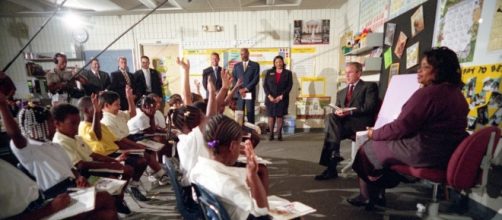People have been complaining about media liberal bias since at least the 1960s, though some evidence suggests that it was a problem as far back as the Great Depression when the media covered Franklin Roosevelt’s New Deal somewhat uncritically. Now Politico has deigned to notice the bias and has concluded that it not only exists but is reinforced by two bubbles reporters live in, geographic and ideological.
Most working national reporters live in deep blue states, either in the northeast or along the west coast. They tend not to visit flyover country between the coasts except for brief times to cover a breaking story.
Reporters do not understand the values and attitudes of Middle America. Hence, they tend to be surprised by developments like the election of Donald Trump as president of the United States.
The analysis is incorrect, as Hot Air notes, by suggesting this development is recent. Liberal media bias predates the rise of the Internet and social media and the demise of a number of traditional print media outlets out in the heartland. Indeed, Internet-based media tends to have a greater diversity of political points of view. Conservative talk radio and Fox News has also served to provide more ideological diversity, something that irks people still living in the mainstream media bubble.
No good solution exists for the problem of reporters being trapped in the twin ideological and geographic bubbles.
Washington is the political center of the United States, New York the financial center, and Los Angeles, due to it having the movie and television industry, the cultural center. Reporters and editors have to live in these places to cover a lot of stories.
Also, most national reporters tend to attend the same journalism schools and pick up the biases of these institutions. The day when a Lou Grant-style reporter with little or no college education but a lot of practical experience and a way with words can become a big city newspaper reporter is largely a thing of the past. People who do the hiring at places like the New York Times and the Washington Post tend to value book learning over life experience.
Still, the problem is not as acute as it was in the bygone age of three TV networks, two major newspapers, and two weekly news magazines. However, the development of alternate news sources has led to a balkanization of audiences, seeking out cable news and other sources of information that confirms rather than challenges their ideological biases. The days when TV news brought together the entire nation in a shared experience is now over. America has become competing tribes based on ideology that increasingly cannot only talk to one another but cannot understand one another.

